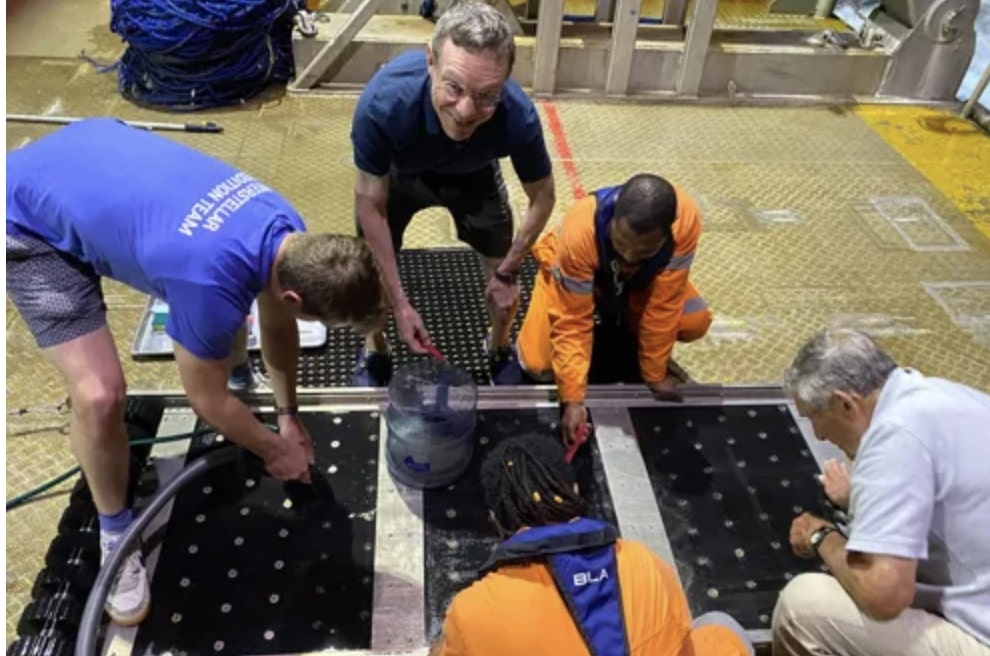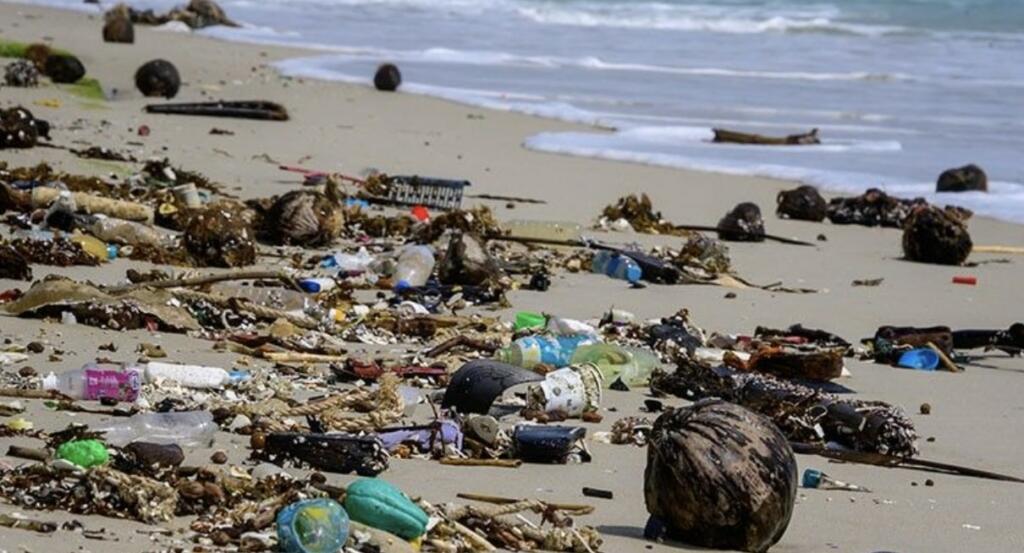Harvard professor Avi Leob team of two dozen researchers and support staff spent two weeks and 1.5 million dollars on bringing a tenth of a millionth of the debris mass from the IM1 interstellar meteor to the deck of their ship. They plan to analyze this material thoroughly in the coming weeks and publish the results in peer-reviewed journals.
They have about 30 milligrams of spherule material as of now. Based on the energy radiated from IM1’s fireball and the measured IM1’s speed, one can infer the mass of material entrained in the fireball to be about 500 kilograms. If we end up retrieving 50 milligrams over the remaining 3 days of the expedition, the total mass we collect would constitute one part in ten million of the fireball’s debris mass.

The hope is that it is easier to detect the junk and pollution of technological aliens rather than radio communications. The interstellar meteor IM1 had an estimated diameter of ∼ 0.45 meters and velocity of 60 km per second, but it was detectable when it entered and burned up within the atmosphere of the Earth. The estimated detection rate for interstellar meteors similar to CNEOS is at least ∼ 0.1 every year , resulting in a local density estimate of i ∼ one million per cubic AU or 10^22 per cubic parsec. They estimate 7.59 × 10^34 IM1-like objects bound by the thin disk of the Milky Way. However, if objects with the properties of IM1 were targeted towards habitable zones containing planets, they estimate 7.59 × 10^18 such objects. IM2 had a similar inferred number density to IM1 and a velocity of 40 km s-1 relative to the Local Standard of Rest. They estimate 2.78 × 10^34 IM2-like objects, and our estimate would be decreased to 2.78 × 10^18 if such objects were targeted towards habitable zones.
Humans makes tens of billions of tons of garbage and pollution every year. A space faring civilization that fully occupies one solar system would produce millions of times more garbage and junk than we do every year. We have only sent up a few thousand satellites and already have millions of bits of space debris.




Brian Wang is a Futurist Thought Leader and a popular Science blogger with 1 million readers per month. His blog Nextbigfuture.com is ranked #1 Science News Blog. It covers many disruptive technology and trends including Space, Robotics, Artificial Intelligence, Medicine, Anti-aging Biotechnology, and Nanotechnology.
Known for identifying cutting edge technologies, he is currently a Co-Founder of a startup and fundraiser for high potential early-stage companies. He is the Head of Research for Allocations for deep technology investments and an Angel Investor at Space Angels.
A frequent speaker at corporations, he has been a TEDx speaker, a Singularity University speaker and guest at numerous interviews for radio and podcasts. He is open to public speaking and advising engagements.


For this to be successful, wouldn’t our solar system have to be littered with so many alien Von Neumann probes that
after getting smashed up by collisions with meteoroids and scatted throughout the solar system that enough of what is left will find it’s way to Avi Loab’s lab. A better spot would be our airless, (relatively) geologically stable moon where an extraterrestrial artifact could last for millions or even billions of years depending on how much of it the micrometeoroids that slowly erode everything on the moon. Lava tubes would be better since the artifacts would be shielded from micrometeoroid erosion, if they are there.
What you wrote was actually very logical. However, what about
this? suppose you wrote a catchier post title? I mean, I don’t want to tell you how to run your website,
but suppose you added a post title to possibly get people’s attention? I mean 30 Milligrams of Interstellar Meteor is Being Analyzed | NextBigFuture.com is kinda
boring. You should peek at Yahoo’s home page and see how
they create article headlines to get viewers to open the links.
You might add a video or a related picture or two to grab people excited about what you’ve got to say.
Just my opinion, it might bring your posts
a little livelier.
I changed the title
Trash and pollution is a measure of inefficiency. The more advanced a civilization is the more likely they are to couple waste streams from one industry into production streams of another.
Stuff happens. Things break. Our civilization is hundreds of billion tons of total developed mass. This mass will increase and be more in space as we develop the solar system and go beyond. How efficient do the alien civilizations get? 1% waste? 0.1%? What is the chance of accidents? 1 in a million? The bigger and more widespread an alien civilization is then the more mass could just end up flaking away or being sent on purpose. Voyager spacecrafts will become inert. Other probes will be sent out and become inert.
How the hell do you find something as small as that in something as large as the ocean? If this is true then give him a couple of million to find mh317
Manus Island was rhe site of ww2 battles. The spacecraft graveyard is relatively close. Important to rule out debris.
A space faring civilization that fully occupies one solar system would produce millions of times more garbage.
This quote might be very incorrect.
A space faring civilization used to travel long distances in space (even within a solar system) will likely recycle most of the matter they use as their vessels and habitat cannot lose significant portions of their mass over time. This is especially true for suff on vessels in interstellar travels as accelerating to cruise speed a pound of matter will be expensive and will require more energy than having that amount of matter ionized to plasma and then sorted/recicled at atomic level. Throwing stuff away will not slow it down, it will continue to travel around your vessel. But replacing what you discarded will cost more energy as you will have to accelerate it up to speed.
In a fully colonized system, most of the garbage will be likely waste from raw mineral extraction (so no technological waste) and this is NOT assuming starlifting where everything is generated by mining the star corona and producing heavy elements through particle accelerators.